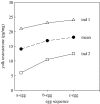Individual variation in endocrine systems: moving beyond the 'tyranny of the Golden Mean'
- PMID: 18048295
- PMCID: PMC2606721
- DOI: 10.1098/rstb.2007.0003
Individual variation in endocrine systems: moving beyond the 'tyranny of the Golden Mean'
Abstract
Twenty years ago, Albert Bennett published a paper in the influential book New directions in ecological physiology arguing that individual variation was an 'underutilized resource'. In this paper, I review our state of knowledge of the magnitude, mechanisms and functional significance of phenotypic variation, plasticity and flexibility in endocrine systems, and argue for a renewed focus on inter-individual variability. This will provide challenges to conventional wisdom in endocrinology itself, e.g. re-evaluation of relatively simple, but unresolved questions such as structure-function relationships among hormones, binding globulins and receptors, and the functional significance of absolute versus relative hormone titres. However, there are also abundant opportunities for endocrinologists to contribute solid mechanistic understanding to key questions in evolutionary biology, e.g. how endocrine regulation is involved in evolution of complex suites of traits, or how hormone pleiotropy regulates trade-offs among life-history traits. This will require endocrinologists to embrace the raw material of adaptation (heritable, individual variation and phenotypic plasticity) and to take advantage of conceptual approaches widely used in evolutionary biology (selection studies, reaction norms, concepts of evolutionary design) as well as a more explicit focus on the endocrine basis of life-history traits that are of primary interest to evolutionary biologists (cf. behavioural endocrinology).
Figures




References
-
- Adkins-Regan E. Princeton University Press; Princeton, NJ: 2005. Hormones and animal social behavior.
-
- Angelier F, Shaffer S.A, Weimerskirch H, Trouve C, Chastel O. Corticosterone and foraging behavior in a pelagic seabird. Physiol. Biochem. Zool. 2007;80:283–292. doi:10.1086/512585 - DOI - PubMed
-
- Angilletta M.J, Wilson R.S, Navas C.A, James R.S. Tradeoffs and the evolution of thermal reaction norms. Trends Ecol. Evol. 2003;18:234–240. doi:10.1016/S0169-5347(03)00087-9 - DOI
-
- Ball G.F, Balthazart J. Individual variation and the endocrine regulation of behavior and physiology in birds: a cellular/molecular perspective. Phil. Trans. R. Soc. B. 2008;363:1699–1710. doi:10.1098/rstb.2007.0010 - DOI - PMC - PubMed
-
- Bennett A.F. Interindividual variability: an underutilized resource. In: Feder M.E, Bennett A.F, Burggren W.W, Huey R.B, editors. New directions in ecological physiology. Cambridge University Press; Cambridge, UK: 1987. pp. 147–169.
Publication types
MeSH terms
Substances
LinkOut - more resources
Full Text Sources
Medical

